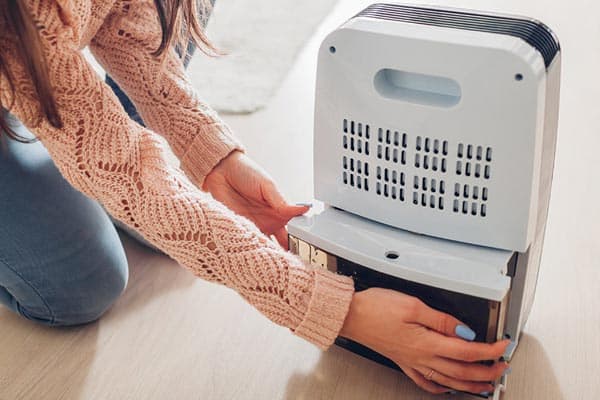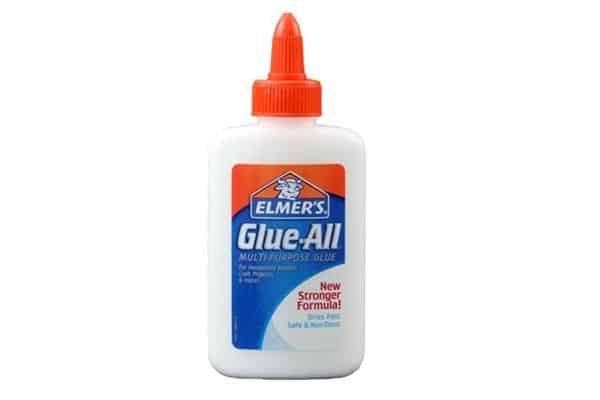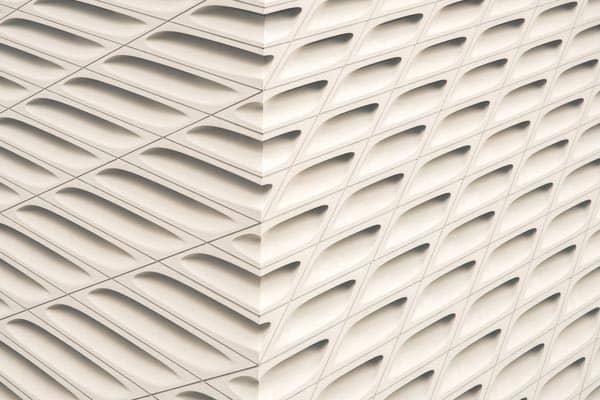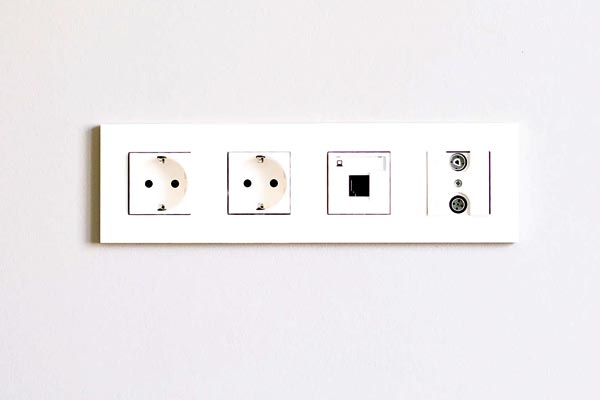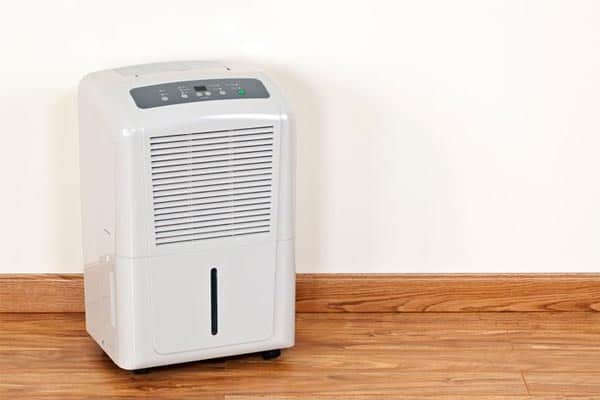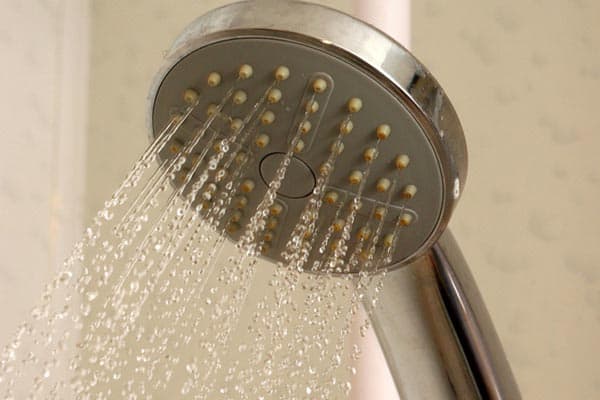How to Figure Out What Size Dehumidifier You Need
Your air quality can suffer in various ways, and excess humidity ranks right up there with the least desirable effects.
If you leave it unchecked, moisture buildup can cause a host of problems inside your home, including warped wood, musty odors, mold, and peeling paint.
If you’re concerned about a higher humidity problem in your home, having a dehumidifier that is the correct size for your space is an excellent way to start addressing it.
Dehumidifiers have a range of sizes that start with portable single-room units up to whole-house solutions that work with your HVAC system.
Determining how bad your problem is, what the ideal humidity is inside your home, and narrowing down how many square feet you have to cover all factors into your final choice.
If your unit is too small to handle your problem, you won’t notice a huge change in the humidity level when it runs.
We’re going to outline how you figure out how bad your problem is, the ideal humidity levels, problems with high humidity, how to figure out what size dehumidifier you need, and more below.
Determine How Bad Your Problem Is
Is the higher humidity levels confined to one area, or is your entire house humid? How large the problem is and how bad it is will determine which dehumidifier works best as a solution.
A larger whole-house unit will attach directly to your HVAC system and have a drainpipe that empties outside, into a sump pump, or into a slop sink. They require professional installation, and they’re expensive.
Portable dehumidifiers are much more budget-friendly and feasible for most people because they plug right into the wall and use built-in interfaces to operate that are easy to understand.
Some portable models come equipped with hoses that drain out a window, and other designs have a bucket that you have to empty manually.
Ideal Humidity Levels
Generally speaking, most people are comfortable when the humidity levels in the home are between 30% and 60%.
If you want to narrow that down further, try to keep your indoor humidity levels between 35% and 50%. Your preferences will factor in very big here, but you shouldn’t let it go above 60% or below 30% at a minimum and maximum.
Problems with High Humidity Levels
Along with making you feel sticky, warm, and uncomfortable, higher humidity can cause a host of other problems. More severe ones include issues with mildew or mold growth to the point of property damage.
You could also experience:
- Damaged electronics
- Dampness
- Dust mites
- Fatigue
- Headache
- Heat exhaustion
- Heatstroke
- High blood pressure
- Mildew
- Mold
- Peeling wallpaper or paint
- Pest or insect risks
- Poor sleep quality
- Respiratory problems
- Sticky windows and doors
- Viruses
- Wilting or smelly plants
- Worsening allergies, asthma, or respiratory conditions
Even if you have an air conditioner or central air running that will naturally cool the air using a refrigeration cycle, it’s not uncommon to still need a dehumidifier.
Picking Out The Capacity of Your Dehumidifier
There are a few things you can do to figure out how large of a dehumidifier you need, and you start the process by looking for signs to figure out how wet the area is.
You can get a humidity meter to measure the exact humidity level, but you don’t need precise measurements when you purchase a dehumidifier.
You should look for:
- Moderately Damp – If the air feels damp or clammy or there is a musty odor when the weather gets humid, you most likely have a moderately damp space.
- Very Damp – If you have a very damp space, it’ll constantly feel damp and smell musty. There could also be damp spots forming on the walls or floor.
- Wet – A wet space usually has water beading on the floors or walls, or you could see moisture seeping around the edges of your room. The room will smell and feel damp constantly.
- Extremely Wet – You’ll have obvious water standing on the floor in an extremely wet space.
Moderately Damp Spaces Require a 10 to 26 Pint Dehumidifier
Your dehumidifier’s size means the capacity, or how much water it can reasonably pull out of the air in a 24-hour span.
If space is only moderately damp, you won’t need to invest in an extremely high-capacity machine. The capacity you end up getting will depend on your space, including:
- 500-Square Feet – 10 Pints or 4.7 Liters
- 1,000-Square Feet – 14 Pints or 6.6 Liters
- 1,500-Square Feet – 18 Pints or 8.5 Liters
- 2,000-Square Feet – 22 Pints or 10 Liters
- 2,500-Square Feet – 26 Pints or 12 Liters
Very Damp Spaces Require a 12 to 35 Pint Dehumidifier
If you have a space that is very damp, meaning that it has damp spots on the floors and walls while always smelling musty, you should get a slightly higher-capacity machine.
You’ll have to take the level of dampness and space’s size into account when you figure out which one you need, but rough guidelines include:
- 500-Square Feet – 12 Pints or 5.7 Liters
- 1,000-Square Feet – 17 Pints or 8.0 Liters
- 1,500-Square Feet – 22 Pints or 10 Liters
- 2,000-Square Feet – 27 Pints or 13 Liters
- 2,500-Square Feet – 32 Pints or 15 Liters
Wet Spaces Require a 14 to 28 Pint Dehumidifier
For very wet spaces where you have a problem with sweating or seepage on the walls and floor, you’ll need a more powerful dehumidifier. You should match your capacity to the size of space and wetness level, including:
- 500-Square Feet – 14 Pints or 6.6 Liters
- 1,000-Square Feet – 20 Pints or 9.5 Liters
- 1,500-Square Feet – 26 Pints or 12 Liters
- 2,000-Square Feet – 32 Pints or 15 Liters
- 2,500-Square Feet – 38 Pints or 18 Liters
How to Figure Out the Square Footage of a Room or Home
You may or may not have noticed that you’ll use square feet to determine which size dehumidifier you’ll need to get rid of the humidity and damp feeling.
If you have a problem with a single room, you’ll have to get the measurements of the length and width of the room. If we assume that the room is a rectangle without any odd nooks or crannies, you get the measurement of
the longer wall and of one shorter wall. Then, you multiply those together to get the square footage of the room.
If you don’t have a perfectly rectangular room, you’ll have to get the measurements of the smaller dimensions too by finding the length and the width and multiplying them.
Then, you’ll get the length and the width of the larger portion of your room, stopping before you hit the space where the smaller portions start.
Multiply your numbers and add the square feet of the bigger room and of the smaller area to get the total area of the room.
Energy Efficiency Factors In
An Energy-Star certified machine would use roughly 15% less energy than a conventional dehumidifier.
In the long run, this means that you’ll save an average of $175 over the dehumidifier’s life, and you also avoid a few thousand pounds of greenhouse gas emissions as it runs. So, it’s safer for you and better for the environment.
Different Dehumidifiers and Space Types
If you live in a cooler environment, you should consider going with a desiccant dehumidifier. Most dehumidifiers come in refrigerant or desiccant types, and desiccant units have lower capacity ratings than the refrigerant models.
However, they operate a lot better when you have lower temperatures, and you should get one if the temperature sits at or right around 65°F.
- These models come with the advantage that they run much quieter than the refrigerant models.
- A desiccant model uses a hydrophilic material like a silica gel to pull moisture from the air. Residential units typically come with a single-use cartridge, and they typically cost more to run. But, they work better in cooler spaces.
If you have a hot and humid area, you’ll want to go with a refrigerant model. They have the capacity to work at a much higher capacity than the other type, and they do much better in higher temperature or humidity levels than the desiccant models do.
- This model uses a heat exchange coil to pull moisture from your air. You can choose a whole-home option or a portable one for smaller spaces, and there are models that connect straight to your HVAC system.
- If the temperature goes below 65°F in the space in your house where you’re running this option, ice can quickly form on the machine’s evaporator coils. This will prevent it from working correctly.
- If you want to move the humid air outdoors, you could use a dehumidifying ventilator. They work best in attics, crawl spaces, and basements.
Whole-Home Dehumidifiers
The best and easiest method for removing the humidity from your home is to get a whole-home dehumidification system.
It works by actively monitoring the home to ensure it stays within the correct humidity levels, and it’ll turn on the humidifier or dehumidifier as needed when the levels go outside of these parameters.
If you want to protect your art, furniture, or other parts of your home from rust, mold, warping, pests, or cracking, you should seriously consider a central humidification system.
This will cost a lot more to install, and the maintenance can be expensive. However, it can help save your home and belongings from humidity problems, and it may even help with your respiratory issues.
Bottom Line
A properly-sized dehumidifier can easily keep up with the excess moisture levels in your home. Make sure you choose one that is powerful enough for the square footage of the room, so you’re comfortable.
